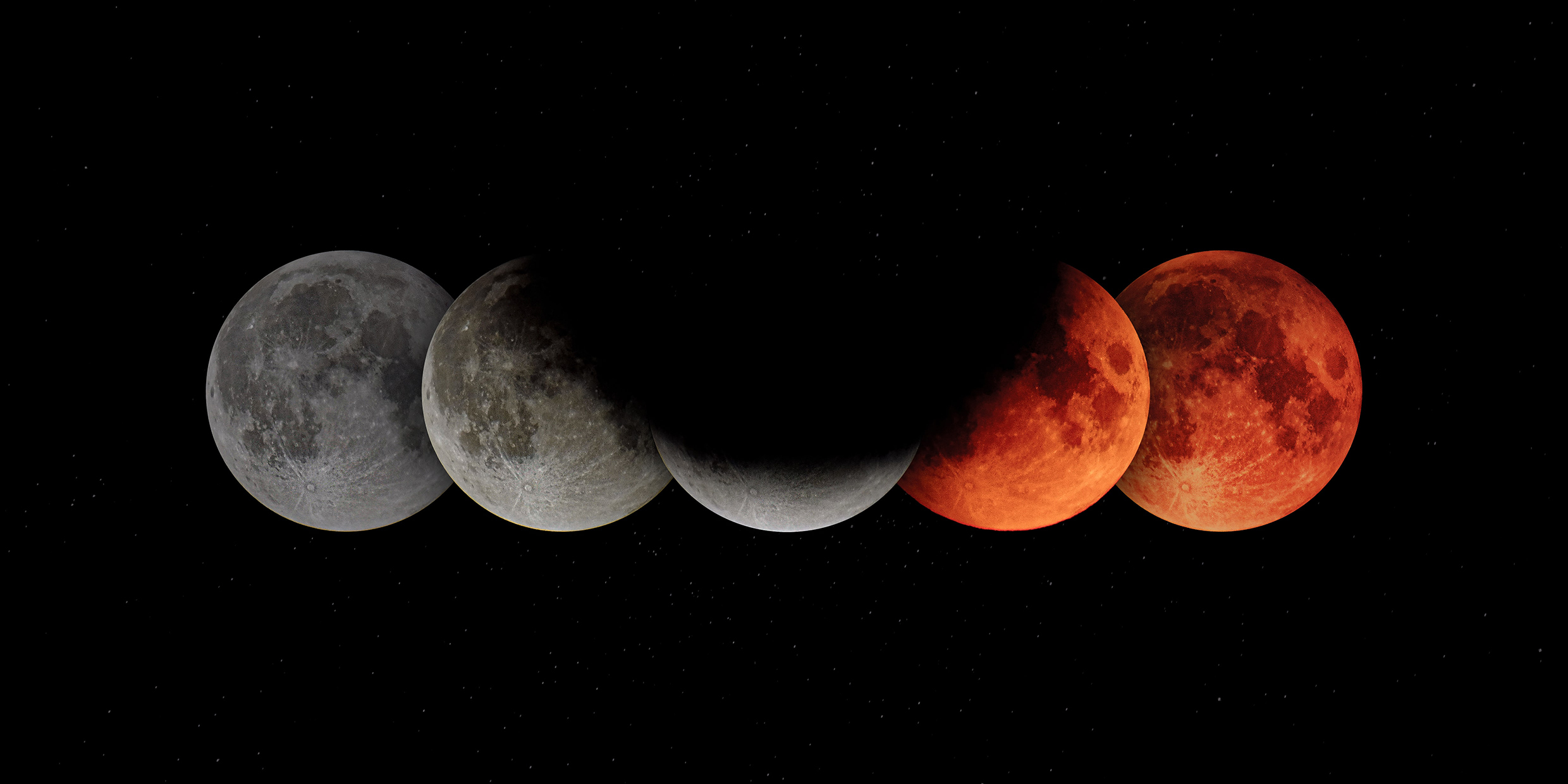Originally published 18 November 1996
When we are standing under the stars, the sky seems unmistakably two dimensional — just up there, like the light-flecked ceiling of the terrestrial ballroom.
Only now and then does night’s third dimension reveal itself. It happened during September [1996]‘s total lunar eclipse. By lucky chance, Saturn was in the same part of the sky as the eclipsing moon. Although only a few finger breadths away on the domed surface of night, we knew that Saturn is actually 3,000 times more distant than the moon.
The Earth wore its shadow like a tall wizard’s cap pointing toward Saturn, a skinny cone of darkness stretching out to a vertex far beyond the moon. As the moon slipped into the shadow, the long thorn-shaped zone of darkness pricked the dome of night and our imaginations fell into infinity.
The third dimension of the night is also time. As we watched the moon hove into shadow, we saw something that had actually happened a bit more than a second ago (it takes the moon’s light 1.3 seconds to reach the Earth). Saturn’s light was more than an hour old. And beyond Saturn, stars twinkled in a past that is measured in years or centuries.
Last year the Hubble Space Telescope pointed its camera at a speck of dark sky between the stars and left the shutter open for a total of 10 days. It recorded galaxies fainter than any seen before, 2,000 galaxies in an area of sky no larger than the intersection of crossed pins held at arm’s length.
We see the most distant of these galaxies at the era when the first galaxies were forming from hydrogen and helium created in the Big Bang, when the universe was less than 5 percent of its present age — less than a billion years old.
The COBE microwave satellite telescope has seen even deeper into the abyss of time. It has recorded the light of the Big Bang itself, a background radiation filling the entire sky, coming to us from a time about 300,000 years after the beginning.
We will never see deeper into time than the COBE image of the sky. Before the universe was 300,000 years old, high energy photons of light collided vigorously with protons and electrons in a hot soup called a plasma. The plasma is opaque, just as the glowing gases inside a fluorescent light bulb are opaque. We will never be able to see through the plasma to an earlier era.
So is the epoch of God’s “Let there be light” forever beyond the reach of scientific investigation? Not at all. We can explore the first 300,000 years of creation by recreating the conditions of that time here on Earth.
One way to recreate the early universe is to do it mathematically. This is the business of theoretical cosmologists, who apply known laws of matter and energy to the extraordinarily hot conditions that existed in the early universe.
We can also use high-energy accelerating machines to speed up particles of matter to the staggering energies of the glowing primordial plasma. This can be extraordinarily expensive; the machines cost billions of dollars to build and run. But without doing the experiments, our mathematical theories remain just stabs in the dark.
A team of physicists at CERN, the European particle accelerator lab, now believe they may have reproduced the state of matter that existed when the universe was only 10 microseconds old. By smashing lead nuclei into subatomic targets, they may have created a quark-gluon plasma, the precursor of protons and neutrons in the unfolding creation.
Quarks are the elusive particles that protons and neutrons are made of. Gluons are the particles that hold them together.
Ten microseconds after the first instant of creation! And already the universe had a history. Already the universe had dramatically cooled from the infinite temperature of time zero. Already it had ballooned in size from an infinitely small point. Already the forces of nature had split from their initial godlike unity.
Does this stuff make your head spin? It made our heads spin on the night of the eclipse when a marvelous conjunction of the moon and Saturn facilitated a glimpse into deep time.
As we watched the eclipse, we let our imaginations follow the pointing shadow of the Earth into the third dimension, the time dimension — moon, Saturn, stars, galaxies, the radiant microwave energy recorded by the COBE satellite — through the vertiginous past toward the singular instant of Creation.
The author of an early history of our town describes a street that becomes an unpaved road, then a track, then a footpath, then a squirrel trail that runs up a tree. Tracing the history of the universe back into time is like following that street. Back, back, we let our imaginations go — seconds, hours, years, billions of years — trusting our equations, trusting our experiments, trusting the power of the human mind to unravel every riddle, until we find ourselves up a tree of infinite mystery.



